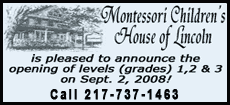 Japanese beetle adults have a one-half- to
three-fourths-inch-long body with copper-colored wing covers and
a shiny metallic green head. A key characteristic is prominent
white tufts of hair along their sides. They also have an
overwhelming appetite for your favorite rose. Adults feed in
herds on many deciduous trees, shrubs and vines, such as linden,
Japanese maple, sycamore, birch, elm and grape. They generally
do not feed on dogwood, forsythia, holly and lilac. Japanese
beetle adults feed on flowers and fruits and skeletonize leaves
by eating the leaf tissue between the veins. Feeding is normally
in the upper portions of trees. Beetles prefer plants in direct
sun, so heavily wooded areas are rarely attacked. Japanese beetle adults have a one-half- to
three-fourths-inch-long body with copper-colored wing covers and
a shiny metallic green head. A key characteristic is prominent
white tufts of hair along their sides. They also have an
overwhelming appetite for your favorite rose. Adults feed in
herds on many deciduous trees, shrubs and vines, such as linden,
Japanese maple, sycamore, birch, elm and grape. They generally
do not feed on dogwood, forsythia, holly and lilac. Japanese
beetle adults feed on flowers and fruits and skeletonize leaves
by eating the leaf tissue between the veins. Feeding is normally
in the upper portions of trees. Beetles prefer plants in direct
sun, so heavily wooded areas are rarely attacked.

Adults can
be with us until mid-August. The life cycle is similar to a June
bug, only it runs a few weeks later. After mating, females lay
eggs in turf, and the eggs hatch into grubs in August. Grubs
feed on plant roots until cold weather drives them deeper into
the soil. Adults emerge in summer of the following year.
The bacterial control -- milky spore, sold as Doom or Grub
Attack -- is frequently recommended to control Japanese beetle
grubs. In our area milky spore is generally not recommended,
since it controls only Japanese beetle grubs and not our
predominant lawn grub, the annual white grub. Also, Japanese
beetle grubs must already be infesting the turf for milky spore
to work effectively. Pesticides commonly used for lawn grub
control will also control Japanese beetle grubs.
Controlling Japanese beetle grubs does not significantly
reduce the number of adult beetles the following year. The
beetles are good fliers and easily travel a couple miles in a
single flight. Evidence suggests that adult beetles are
attracted to previously damaged leaves. Therefore, reducing
feeding damage now can result in less feeding damage in the
future.

Generally pesticide sprays of cabaryl sold as Sevin can
reduce damage for up to two weeks, but four to seven days is
more likely. Sevin is toxic to bees. Synthetic pyrethroids can
also be effective but tend to break down quickly with extreme
heat. These would include permethrin and bifenthrin. The
Japanese beetle repellent made from Neem has not been shown to
be effective. Picking beetles off by hand every couple of days
may be just as effective as spraying. When disturbed, the
beetles fold their legs and drop to the ground. Covering plants
with floating row covers can protect prized roses and ripening
fruit. Japanese beetle traps are not recommended since they can
actually increase damage by attracting more than they kill.
A number of birds, such as grackles, cardinals and
meadowlarks, feed on adult beetles. Two native predator insects
and a couple of introduced parasites may help to keep Japanese
beetle populations in check. Protect natural enemies by keeping
the use of conventional pesticides to a minimum. Although damage
looks devastating, Japanese beetle feeding rarely kills plants.
Therefore, confine control of beetles to shrubs and small trees
near main building entrances and other important landscape
locations where damage is obvious. Protecting a prize rose bush
or a newly transplanted linden tree is a good idea.
[to top of second column] |

Potato leafhopper
In keeping with the insect theme, potato leafhopper numbers
exploded last week. This is the small wedge-shaped, light green
insect that seems to just fog around security and patio lights. They
are not only a nuisance, but they can cause damage to a wide variety
of plants.
Potatoes are the first plant that comes to mind when we talk
about potato leafhoppers (must be something about the name), but
many other plants ranging from beans to trees can be affected. You
may be wondering what kind of damage a few little leafhoppers can
do, especially since they suck sap from plants and aren't that big
in size.

Leafhoppers suck sap and then inject a toxin back into the plant.
Along the same lines as humans getting a mosquito bite, it's the
extra that's injected back in that causes the injury. Symptoms of
leafhopper damage start as yellow "V"-shaped areas on the tips of
leaves. These areas turn brown or black and then fall out, leaving a
"V"-shaped hole on the tip of the leaf. This is a symptom but not
the only injury. Large numbers of leafhoppers can kill potato and
other plants.
Controls for leafhoppers are warranted with very low numbers. In
alfalfa fields, it is recommended to treat when two leafhoppers are
caught in a sweep net in alfalfa over a foot tall. Garden treatment
options for potatoes include Sevin and rotenone as common
insecticide choices available to homeowners. Most trees and shrubs
can be treated with Sevin, permethrin or bifenthrin.
[By
JOHN FULTON,
University of Illinois Extension, Logan County]


 |